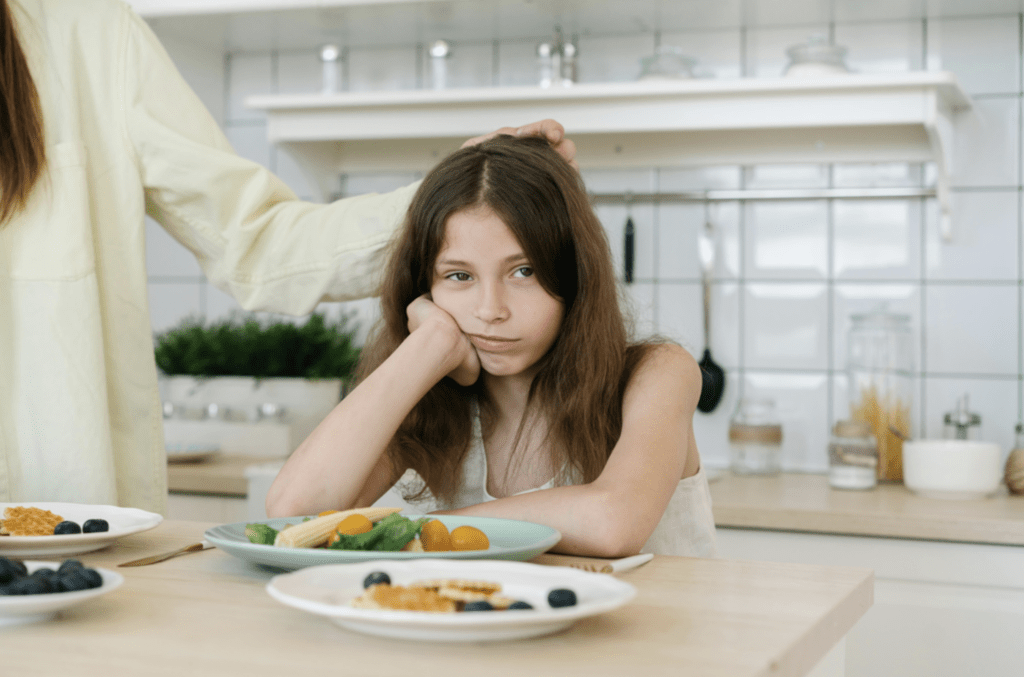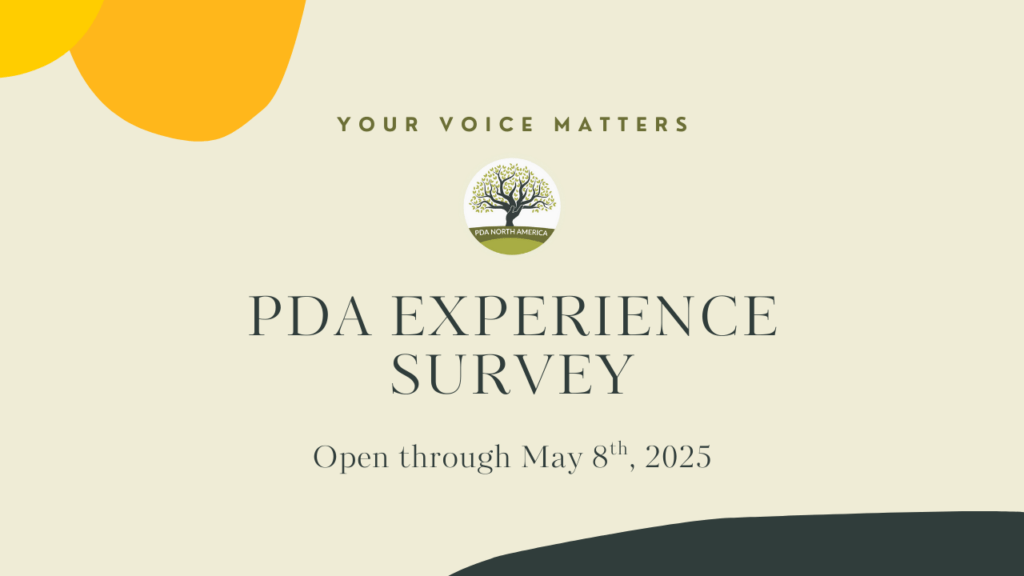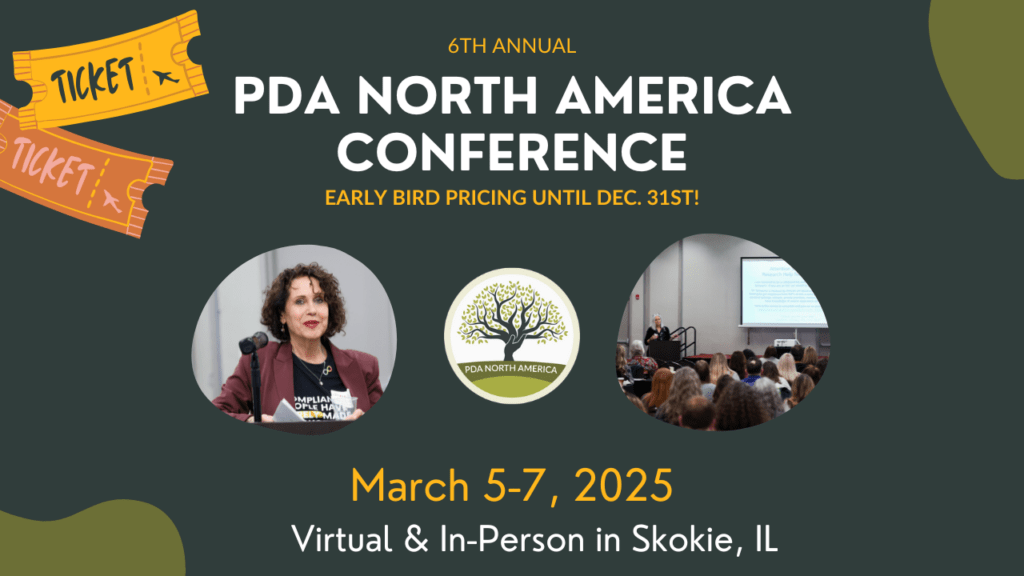Food opportunities can often be a source of stress for families. Many parents and carers have shared with me that they feel like they are constantly ‘battling’ with their young person over food.
As you can imagine, there are so many layers to this experience. To help figure out the ‘why’ for the battles involves investigating many things. This includes questioning some of the most common parenting strategies that have been role modeled to us to ‘get the kid to do the thing’.
And of course, non-PDAers may experience similar.
PDA stands for Pathological Demand Avoidance or Pervasive Drive for Autonomy
Some traditional parenting strategies—like enforcing strict rules, insisting on “one bite,” or using rewards—may seem like logical solutions but often backfire, especially with PDAers. These approaches can amplify resistance and turn eating into a power struggle. Perhaps the key to breaking the cycle lies not in doubling down but in rethinking these strategies altogether. What if we shifted the focus from control to collaboration, creating an environment that encourages autonomy while fostering positive associations with food?

Rethinking Negotiation
Traditional parenting advice often encourages negotiation to resolve mealtime challenges, but for PDAers, this approach can backfire. Negotiation is, at its core, another form of demand.
Imagine this: you tell your PDAer, “If you eat three more bites of broccoli, you can have dessert.” What seems like a harmless negotiation quickly spirals into frustration or refusal. For PDAers, even well-meaning negotiations can feel like demands, triggering anxiety and resistance.
Example of Negotiation in Action with a PDAer
- Parent – “If you eat 5 bites of carrot, then you can have a pudding”
- A potential PDAer response – “Well, I didn’t want the pudding anyway!” and leaves
Instead of framing food opportunities as a negotiation, consider adopting a more flexible and pressure-free approach. Focus on creating a relaxed mealtime atmosphere and offering choices without expectation. By removing the pressure to engage, you may find that your PDAer feels more comfortable exploring food at their own pace.
Why ‘Oughts’ and ‘Shoulds’ Often Don’t Work
Statements like “You should eat your vegetables to be healthy” or “You ought to finish your dinner before leaving the table” may seem like common-sense ways to encourage eating. However, for PDAers, these phrases often feel like demands, sparking immediate resistance or anxiety.
For example, saying, “You should eat your sandwich before we go out,” might lead to a full-blown refusal, even if they were initially inclined to eat. The pressure of an expectation—especially one tied to rules or obligations—can make eating feel like a chore rather than a choice.
Instead, try using non-directive language, also called declarative language (For more information on Declarative Language, check out Linda Murphy’s book called the Declarative Language Handbook). For instance, “Your sandwich is here if you’d like it before we leave,” communicates the same idea without imposing an expectation. This subtle shift can create a sense of autonomy, making it easier for a PDAer to engage with food on their terms.
Another Example of ‘Oughts’ and ‘Shoulds’ in Action
- Parent – “You should try a food 8 times before deciding you don’t like it.”
- A potential PDAer response – “How is there a magic number? I know I don’t like it now!”
Rethinking External Rules Around Eating
Rigid rules like “No one gets pudding without clearing their plate” are often used to encourage children to eat, but for PDAers, these external rules can feel overwhelming and controlling. Instead of motivating, they may provoke resistance or create anxiety around mealtimes.
For instance, if a PDAer hears, “You can’t have pudding unless you finish your peas,” they’re likely to push back against the rule—even if they like pudding! The focus on compliance turns eating into a battle of wills, rather than a natural, enjoyable experience.
A more effective approach is to remove conditional rules altogether. Offer pudding as a neutral part of the eating opportunity. This helps to remove pressure and supports the PDAer to make choices without feeling manipulated or constrained by external demands.
Examples of Responding to External Rules
- Parent – “No one gets a pudding without clearing their plate”
- A potential PDAer response – *dumps food into rubbish bin to clear their plate*
or
- Parent – “You can’t eat in your room, you have to eat at the table with us”
- A potential PDAer response – *goes to table & inhales food & refuses to look at anyone or talk to anyone & then promptly leaves when finished*
Why Rewards and Sanctions Often Don’t Work with PDAers at Mealtimes
Traditional parenting strategies often rely on rewards and sanctions to encourage behavior, but these approaches are rarely effective for PDAers. Both methods create pressure, which can escalate resistance and make mealtimes even more challenging.
For example, promising a reward like, “If you eat all your carrots, you can have extra screen time,” might seem motivating. However, a PDAer may feel manipulated, turning what could have been a simple choice into a power struggle. Similarly, sanctions like, “If you don’t eat your dinner, you won’t get any dessert,” can amplify feelings of control and make eating an even more fraught experience.
Instead, try removing the focus on outcomes altogether. Offer food without conditions or pressure, and support them in deciding what and how much to eat. By fostering an environment of autonomy and trust, you’re more likely to see natural engagement with food over time.
What Else Can Help?
If your young person says or looks unable to eat a food, you can consider saying…
- ‘No’ together.
- You don’t have to eat this
- You don’t have to eat this now
- You don’t have to eat this later
There are no winners or losers here. You did not ‘give in’. You listened to your young person advocating for themselves and created a sense of safety and trust. That feeling of safety and trust will carry into the next food opportunity. Focus on your connection. When we feel safe and connected to the person providing a food opportunity, we are more able to join in.

Laura is an PDA Autistic and ADHD health educator, independent Nurse & Sleep Consultant, and Associate Editor of Autistic Revolution magazine, specializing in supporting neurodivergent and disabled community members.
Drawing from lived experience and public health service, Laura creates inclusive spaces, hosts community events and co-authors books like Gabby’s Glimmers and Creating Safe Spaces for Autistic People.
Laura’s Newsletter on Substack







